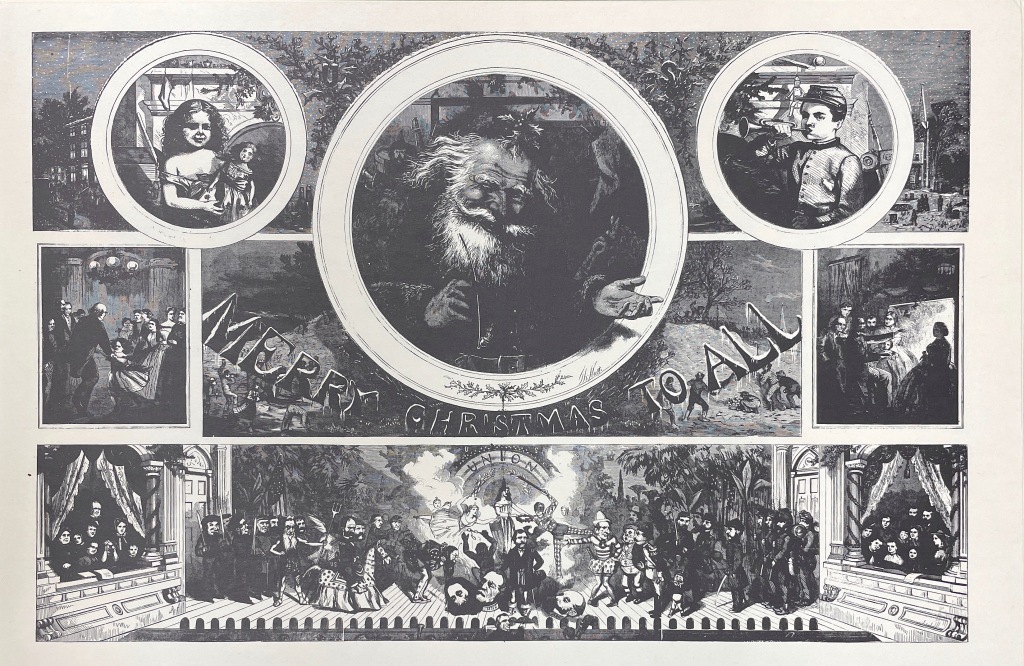This post was authored by Rachel Nelson, SCUA Social Media Assistant for Fall 2021.
The rosy-cheeked, cigar smoking, round and jolly rendition of Santa Claus we are all familiar with today can be credited to none other than Thomas Nast. Nast is best known for his political cartoons from the late 1800s, and is also accredited to popularizing the donkey and elephant symbols to represent the Democrat and Republican parties. Nast’s political influence was vast in the United States, with our records showing that President Abraham Lincoln called the artist “our best recruiting sergeant” and Ulysses Grant stated “he did as much as any man to preserve the Union and bring the war to an end.” While writing political cartoons for Harper’s Weekly in the 1860s, Nast began a yearly tradition of including Santa Claus and Christmas related art that caught on just as rapidly as his political cartoons.

SCUA houses the volume The Christmas drawings of Thomas Nast, a compilation of nearly all Nast’s Santa Claus and Christmas illustrations from Harper’s Weekly available for viewing. Throughout Nast’s illustrations are small allusions to the Civil War, politics, and political figures. Below are some highlights from the collection, but stop by SCUA to view Nast’s art in its entirety and to spot all the hidden references!






















